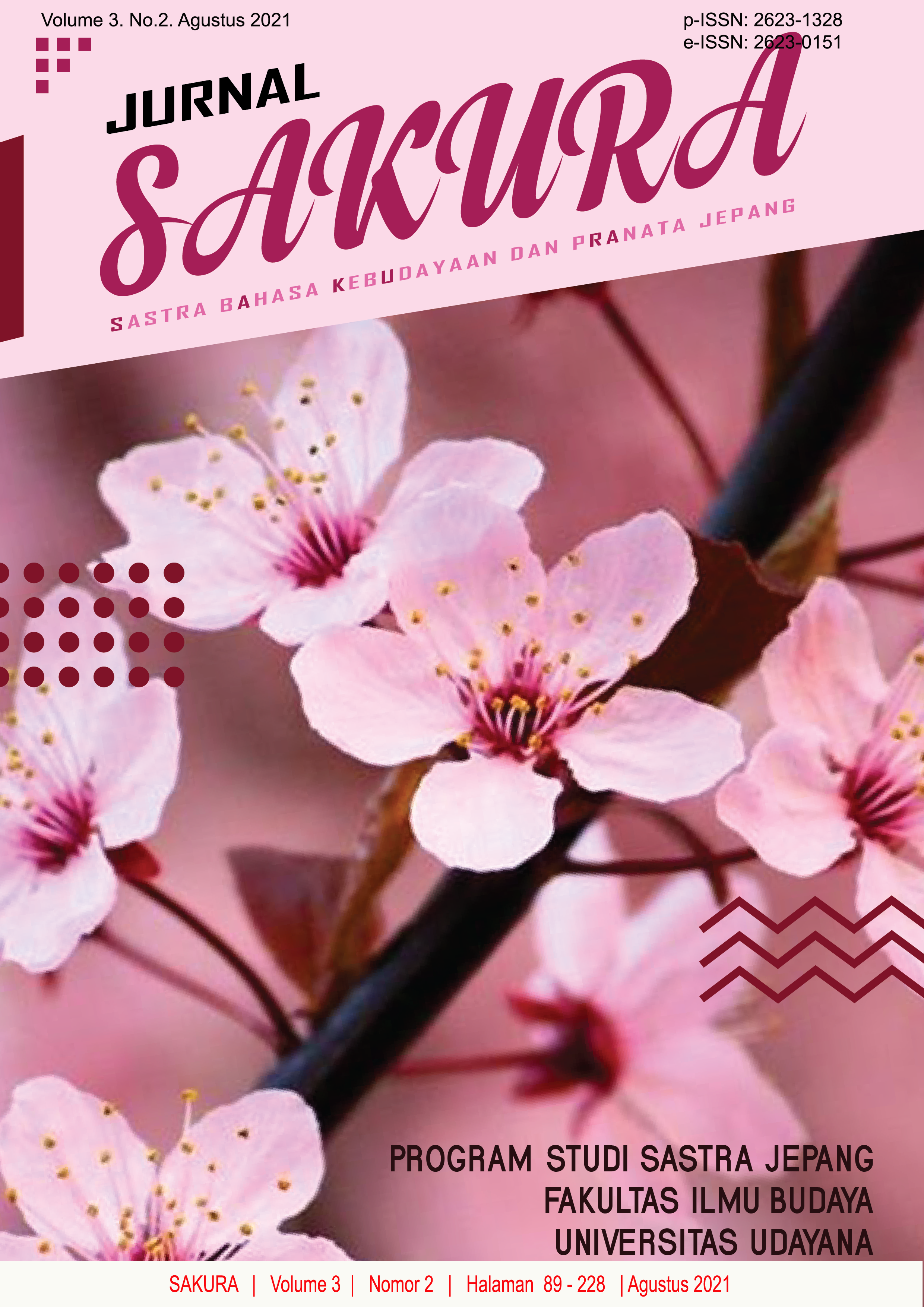Teknik dan Metode Penerjemahan Kalimat Imperatif dalam Novel Girls in The Dark oleh Andry Setiawan
Abstract
This study discusses the translation of imperative sentences contained in a literary work in the form of a novel. In general, the use of imperative sentences is characterized by the meaning of orders and prohibitions. However, there are differences between the imperative sentences of one language and another. Methods of data analysis are using translational equivalent method and glossing technique. The data were analyzed in two stages. First, categorizing the translation techniques used based on the theory of translation techniques according to Molina and Albir (20002), and second, determining the translation method using the theory of the translation method according to Newmark (1988). Based on the analysis, there were eight types of translation techniques found, namely 1) adaptation techniques; 2) amplification techniques; 3) established equivalent techniques; 4) generalization techniques; 5) linguistic compression techniques; 6) literal translation techniques; 7) modulation techniques; and 8) reduction techniques. Furthermore, translation method classified based on the orientation of the source language and target language is found. The translation method which is oriented to the source language consists of two translation methods, namely the semantic translation method and the literal translation method. Meanwhile, the translation method which is oriented towards the target language consists of three translation methods, namely the free translation method, the idiomatic translation method, and the communicative translation method. The results of this study indicate the translation method that is most widely used in this research is free translation method so that the translation of the imperative sentences applied in translating the novel Girls in the Dark by Andry Setiawan tends to be oriented towards the target language.
Downloads
References
Arino, Sagawa. 1998. Nihongo Bunkei Jiten. Tokyo: Kuroshio Shuppan.
Hadi, Irene. 2017. Grid.id, 16 agustus 2017 – ‘Suka Minum Matcha dan Ocha? Tahu Nggak Bedanya Apa?’. (Diakses 17 Desember 2020 pada https://www.grid.id/amp/04140729/suka-minum-matcha-dan-ocha-tahu-nggak-bedanya-apa?page=all)
Iori, Isao. 2000. Nihongo Bunpou Hand Book. Japan: Corporation.
Kridalaksana, Harimurti. 2008. Kamus linguistik edisi ke-4. Jakarta: Gramedia.
Molina, Lucia and Amparo Hurtado Albir. 2002. Translation Techniques Revisited: A Dinamic and Fuctionalist Approach. Barselona: Universitas Autònoma de Barcelona.
Matsuura, Kenji. 2014. Kamus Bahasa Jepang-Indonesia. Jakarta: Gramedia Pustaka Utama.
Moriya, Shinaki. 1990. Gendai Gairaigo Jiten. Tokyo: Sanseido.
Newmark, Peter. 1988. A Textbook of Translation. UK: Prentice Hall.
Rikako, Akiyoshi. 2013. Ankoku Joshi. Tokyo: Futabasha.
Rikako, Akiyoshi. 2016. Girls in The Dark (Ankoku Joshi). Jakarta: Penerbit Haru.
Tanahashi, Akemi dan Tashiro, Hitomi. 2013. The Japan Times Life, 06 Oktober 2013 – ‘Ki: more than a feeling’. https://www.japantimes.co.jp/life/2013/10/06/language/
ki-more-than-a-feeling/#.XvCihGgzbIW (Diunduh 5 April 2019)













